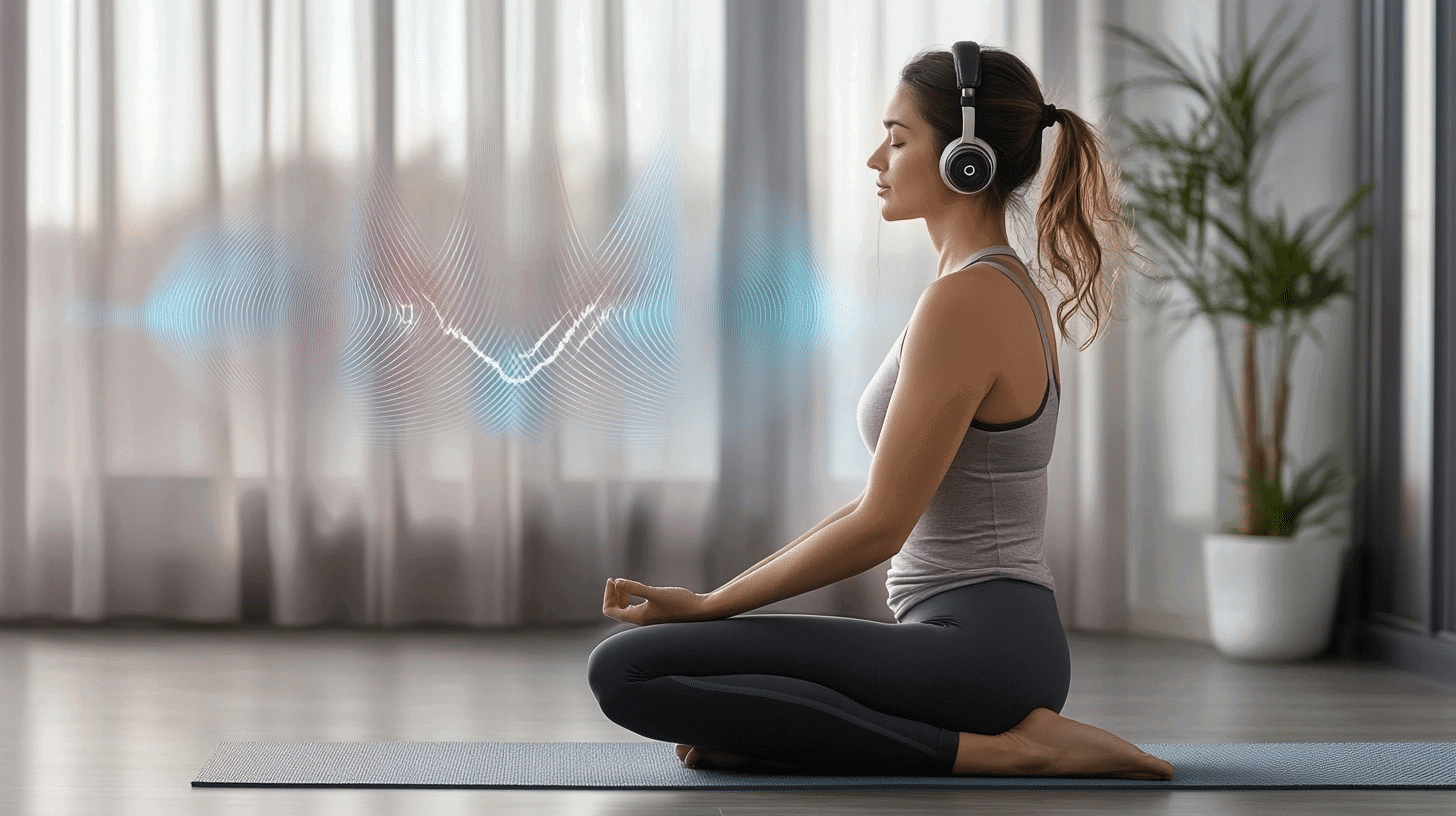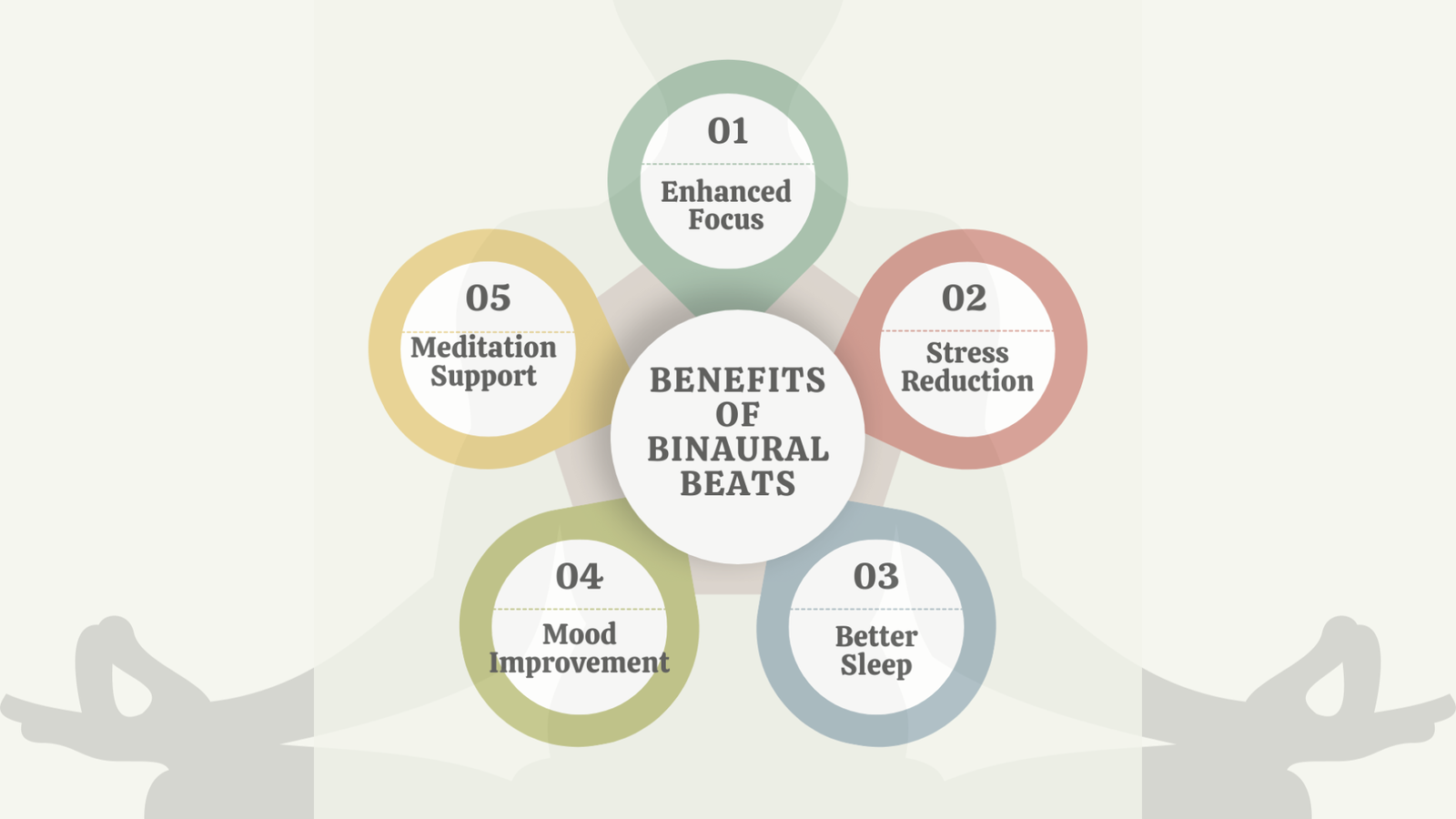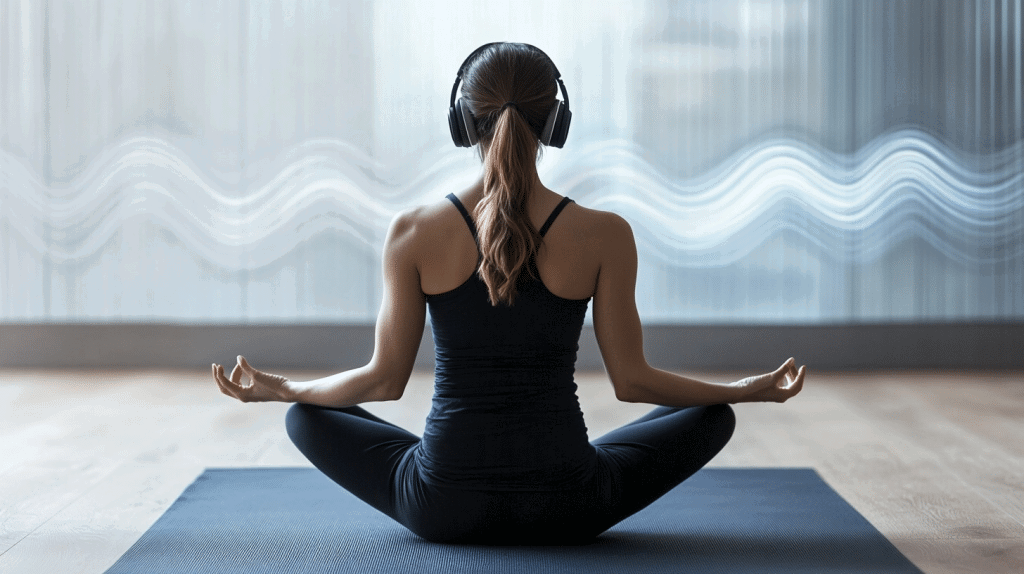Binaural beats have gained popularity as a sound tool that may help with focus and relaxation. When you play two slightly different sound waves in each ear, your brain creates a third beat. This process can be useful, but only when done right.
Many people miss out on the full effects because they don’t follow basic listening rules. They might use the wrong headphones or pick poor listening times.
Some even expect results too quickly. The truth is that proper technique matters a lot with binaural beats. However, with correct methods, you could notice better results in your daily practice.
This post will share simple and effective tips to help you get the most from your binaural beats sessions. And, by following these steps, you’ll set yourself up for a more effective listening experience.
Understanding Binaural Beats
Binaural beats work on a simple principle. When you listen to two tones with slightly different frequencies in each ear, your brain creates a third tone.
For example, if you hear 200 Hz in your left ear and 210 Hz in your right ear, your brain processes a beat of 10 Hz. This happens in the brain stem and helps change brain waves to match this new frequency.
Your brain tries to match the frequency it hears. This process, called frequency following response, can guide your mind toward a specific state.
Many people use these beats for stress relief, better sleep, increased focus, or deeper meditation sessions.
Types of Binaural Beats
Binaural beats come in various frequencies, each designed to produce specific effects on your brain and body. The frequency range determines what mental state the beats may help you achieve.
| Type of Binaural Beat | Description |
| Delta (0.5-4 Hz) | Helps promote deep sleep and healing in the body. |
| Theta (4-8 Hz) | Supports relaxation, meditation, and creative thinking. |
| Alpha (8-13 Hz) | Enhances calm alertness and reduces stress levels. |
| Beta (13-30 Hz) | Boosts concentration, alertness, and mental clarity. |
| Gamma (30-100 Hz) | Supports higher mental activity and improved memory. |
Simple Tips on How to Listen to Binaural Beats

Each tip addresses a common mistake that might prevent you from experiencing the full benefits of these sound tools.
Follow these guidelines to improve your results and make binaural beats work better for you.
1. Use Quality Headphones
Always use good stereo headphones when listening to binaural beats. Each ear needs to receive a different tone for your brain to create the third beat.
Without headphones, sounds mix in the air before reaching your ears, ruining the effect. Earbuds work fine, but over-ear headphones often provide better sound quality.
How It Is Effective
- Better sound isolation from outside noise
- Proper separation of frequencies between ears
- More comfortable for longer sessions
- Enhanced overall audio quality
2. Find a Quiet Space
Choose a quiet location for your sessions where you won’t face interruptions. Background noise can interfere with the subtle tones in binaural beats.
However, a peaceful room away from traffic sounds, talking, or household noises works best. Some people prefer to listen right before bed when the house is naturally quieter.
How It Is Effective
- Fewer distractions during your session
- Deeper focus on the beats
- More consistent brain response
- Better overall experience
3. Set the Right Volume
Keep the volume at a medium level—not too loud, not too soft. The beats should be clearly audible but never uncomfortable.
Very loud volumes can cause hearing damage and stress, while volumes too low might not trigger the brain response you want. Find that sweet spot where you hear the beats clearly.
How It Is Effective
- Protects your hearing health
- Creates optimal conditions for brain entrainment
- Reduces physical discomfort
- Helps maintain focus throughout the session
4. Start with Short Sessions
Begin with short listening periods of 15-20 minutes and slowly increase them as you get used to the experience. Your brain needs time to adjust to this type of stimulation.
Many people try hour-long sessions right away and feel overwhelmed. Building up gradually helps your brain learn to respond more effectively.
How It Is Effective
- Prevents mental fatigue
- Allows time for adjustment
- Creates sustainable habits
- Helps track your responses more accurately
5. Choose the Right Time
Listen when you’re neither too tired nor too alert. Early morning or early evening often works well for most people. Avoid times when you feel extremely sleepy, as you might fall asleep.
Also, skip sessions when you feel wired or stressed, as your brain may resist the frequency change.
How It Is Effective
- Maximizes receptiveness to the beats
- Creates consistent routine
- Fits naturally into daily schedule
- Improves overall effectiveness
6. Select the Appropriate Frequency
Pick beats that match your goals for the session. Want to sleep better? Choose delta frequencies. Need to focus? Try beta frequencies.
Using theta beats when you need to be alert for work won’t help. Match the frequency to what you want to achieve in that specific moment.
How It Is Effective
- Targets specific mental states
- Produces more predictable results
- Addresses your current needs
- Prevents frustration from mismatched expectations
7. Maintain Consistent Practice
Listen regularly to see meaningful results. Binaural beats work best with consistent use over time. Many people give up after just a few sessions.
Try using them daily or every other day for at least two weeks before deciding if they work for you.
How It Is Effective
- Builds stronger neural pathways
- Creates lasting changes in brain patterns
- Establishes helpful routines
- Provides more reliable outcomes
8. Limit Other Stimuli
Turn off screens and visual distractions during your session. Some binaural beats come with background music or nature sounds, which is fine.
But watching videos or scrolling through social media while listening defeats the purpose. Give your brain space to respond to the audio without competing input.
How It Is Effective
- Deepens your concentration
- Reduces mental chatter
- Improve the quality of each session
- Helps track the rue effects of the beats
9. Have Realistic Expectations
Understand that results may take time and vary from person to person. These beats aren’t magic—they’re tools that can help shift your mental state gradually.
Some people notice the effects quickly, while others need more time. Keep notes about your experience to track subtle changes over weeks.
How It Is Effective
- Prevents disappointment
- Encourages patience with the process
- Helps notice smaller positive changes
- Creates a more positive overall experience

Myths About Binaural Beats
Many false ideas about binaural beats spread online and lead to wrong expectations. Let’s clear up some common myths so you can get better results from your listening practice.
| Myth | Fact |
|---|---|
| Binaural beats work through any speaker system. | Binaural beats need separate tones delivered to each ear, which only happens properly with headphones. |
| Results should be felt immediately after the first session. | Most people need multiple sessions over days or weeks to notice significant changes in their mental state. |
| Higher frequency beats work better than lower ones. | Each frequency range serves different purposes; the best one depends on your specific goals and needs. |
| You must sit completely still during the session. | Small movements won’t ruin the effects of binaural beats. |
| Binaural beats can replace sleep or meditation. | Binaural beats support but don’t replace sleep or traditional meditation techniques. |
| The effects last for days after a single session. | Most changes are temporary, lasting only a few hours after listening. Regular practice is important. |
Conclusion
With the right approach, these sound tools can become valuable additions to your daily routine.
What’s your next step? Try picking one frequency that matches your current needs. Start with short sessions and give yourself time to notice subtle changes.
Keep notes about how you feel before and after listening. If you’re interested in sleep support, begin with delta frequencies before bed.
For better focus during work, test beta frequencies during your morning routine. The benefits are waiting – you just need the right approach to find them.
Frequently Asked Questions
Is it Okay to Listen to Binaural Beats Daily?
Yes, daily listening is fine for most people. Start with short 15-20 minute sessions and take breaks if you feel tired or get headaches.
How to Know Which Binaural Beat to Use?
Match the beat to your goal: delta for sleep, theta for relaxation, alpha for calm focus, beta for active thinking, and gamma for problem-solving.
Is It Okay to Sleep with Binaural Beats?
Yes, delta beats (0.5-4 Hz) work well for sleep. Use comfortable headphones and set a timer to stop playback after you fall asleep.





















